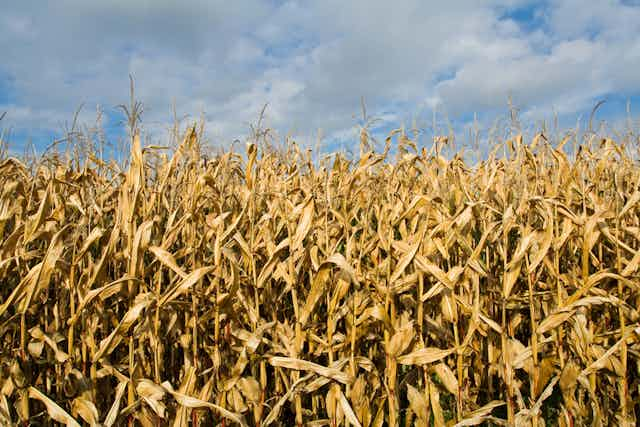One of the most important consequences of climate change will be its effect on agriculture. A lot of research has focused on food scarcity as the world heats up, but the connection between agriculture and health goes beyond mere calories.
The World Health Organisation’s Global Burden of Disease reported that, in 2010, the greatest number of deaths worldwide was attributable to imbalanced diets, such as diets low in fruit and vegetables and high in red and processed meat. Climate change is likely to make the problem of imbalanced diets worse.
In a new study, we estimated that climate change could lead to more than half a million additional deaths worldwide in 2050 as a result of changes in the composition of diet and body weight. To put this into context, the estimated number of deaths as a result of climate change-induced heat stress is about 100,000 deaths. And the additional deaths as a result of the greater spread of dengue and malaria is below 50,000.
Building a model
To analyse the effects of climate change on diets and body weight, we used a series of computer models. We initially used models that estimated changes in temperature and rainfall around the world under different climate scenarios. The results of these models were then used in global crop models which estimated changes in crop growth around the world.
We then used these changes in a global economic model that projected the market reactions to those “shocks”, for example, changes in the area used to plant crops, price changes, changes in global food trade, and finally, changes in food consumption worldwide. Based on the economic results, we were then able to calculate changes in the number of deaths associated with changes in diet composition and body weight.
Our models showed that about half a million additional deaths would occur due to reductions in fruit and vegetable consumption alone. Climate-related reductions in red meat consumption mitigated part of that health burden, but not to a large degree.
Changes in body weight were much more balanced globally. We found that an increase in the proportion of people who are underweight would lead to about a quarter of a million additional deaths, but also that reductions in the proportion of people who are overweight or obese would lead to a similar proportion of avoided deaths.
Of course, beyond the global changes are big regional differences. Climate-related increases in the proportion of underweight people represented the greatest health burden in the low and middle-income countries of South-East Asia, in particular in India, as well as in the low and middle-income countries in Africa. Reduction in fruit and vegetable consumption was the greatest health problem in most other regions, including the low and middle-income countries of the Western Pacific, in particular China, but also of Europe and the Eastern Mediterranean, as well as in high-income countries.
About 75% of all climate-related deaths were projected to occur in China and India. In China, the burden is mostly due to reductions in fruit and vegetable consumption, while in India, it’s mostly due to increases in the number of people being underweight.

What to do about it?
Two things can be done to address the health effects we found. First, the health effects of climate change diminished with the severity of climate change. Were the world to follow a path of lower emissions, then the health impacts of climate change would be reduced – by about a third if current emissions reduction targets are met, and by more than two thirds if more ambitious emissions reduction targets are met (that is, ones that will keep global warming at less than 2ºC by the end of the century). But governments and industry will need to do a lot more if we are to achieve the latter.
Second, a prudent approach to the problem of changes in food supply as a result of climate change would be to put more emphasis on preventing and treating ill health related to imbalanced diets. This could be by increasing fruit and vegetable consumption, and by considering the whole weight distribution instead of just changes in the number of people who are underweight. And we need to move away from just looking at how much food there is to also considering what food there is.

